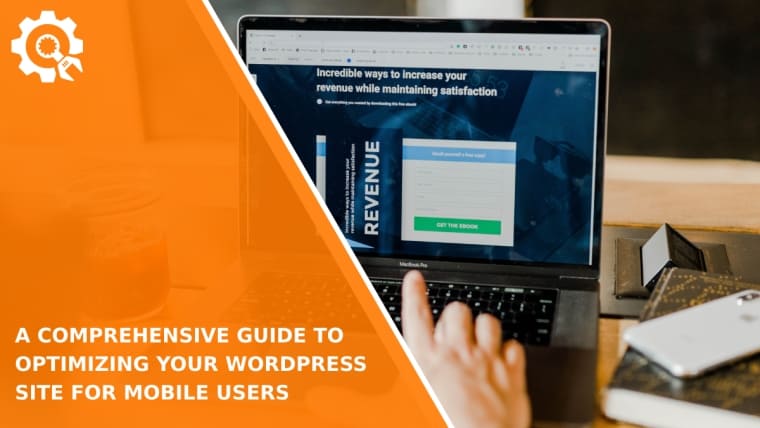With smartphones clearly dominating the search engine searches, a mobile-friendly WordPress site is a crucial requirement. Despite the prevalence of mobile-friendly websites, creating an attractive and responsive website still requires some effort. This guide aims to illuminate the significance of a mobile-friendly website and provide insights into building one on WordPress.
Why emphasize mobile-friendly sites?
In 2023, a staggering 63% of Google organic searches occurred on mobile devices, signifying a paradigm shift towards mobile usage. To keep pace with the growing popularity of mobile development, your website must seamlessly adapt to diverse screen sizes. Beyond enhancing user experience (UX), there’s one more critical reason for your site to be mobile-friendly – that’s Google. In 2015, with the advent of “Mobilegeddon,” Google revamped its algorithms to favor sites that were “mobile-friendly.” This hinges on one pivotal data point – the responsiveness of your website.
This implies that a site optimized for mobile devices stands a better chance of performing well in the search results. If your WordPress site isn’t designed to be mobile-friendly, numerous tools can assist you in catching up and building a fully functional, responsive site.
Although mobile users form the bigger chunk of website users on phones, desktop users are important too. This is why it is important that all the content and visuals on your desktop and mobile WordPress sites are similar and easily accessible. Make sure animations or videos are of high quality and can be shared or even downloaded by users. To see how video downloading works on iPhones, you can go through this BacklightBlog’s post. This additional information will be vital for you to understand the process of saving videos on phones.
Taking the mobile-friendly test
Google offers mobile-friendly testing that swiftly assesses if your site is mobile-friendly or not. Punch in your site’s URL in the tool for the evaluation. If it clears the tool, you receive an encouraging success message.
For developers, Google has also introduced a Mobile-Friendly Test API, enabling URL testing with automated tools. This not only facilitates rapid testing of multiple pages but also allows for ongoing monitoring without the need for constant manual checks. After using Google’s mobile-friendly test, it’s time to work on improvements, starting with the WordPress theme you use.
Utilizing (or creating) a responsive WordPress theme
If you recently installed a new WordPress theme, chances are you’re on the right track. However, if your theme has been in use for an extended period, it might be time for an update. Begin by confirming your WordPress and theme versions and implementing any pending updates.
Some updates may contain mobile-friendly elements, potentially resolving your issues. If updates prove insufficient, consider exploring new themes or contemplate creating your own.
Exploring the best mobile-friendly WordPress themes
Currently, the majority of WordPress themes are responsive, making it uncommon to encounter a non-mobile-friendly theme. Nevertheless, before purchasing a theme, ensure it displays well on all screen sizes.
Test the demo site, adjust your browser window size, and peruse reviews for insights from actual users. If you’re satisfied with the theme’s performance, go ahead. However, if something seems amiss, explore other themes, considering the myriad options available. For those considering free themes, assess how well it aligns with your content presentation on mobile devices.
Leveraging responsive plugins
Plugins contribute functionality to your WordPress site, often without a visual impact on the front end. However, if a plugin introduces a visual element (such as a widget or CTA button), ensure it scales effectively on all screen sizes or provides an option to disable it on smaller screens.
For instance, a desktop-friendly sidebar widget may not translate well to mobiles unless it scales down appropriately. Similar to themes, scrutinize plugin features, read reviews, or go for a demo before making a purchase. Whenever a new plugin is activated, perform a quick quality check to ensure proper scaling across screen sizes.
Steering clear of pop-ups on mobile devices
For WordPress sites with an idea to build up an email list, various opt-ins are likely incorporated. While most email opt-in forms function well on mobile devices when they are scaled and user-friendly, pop-ups pose a different challenge. Google now penalizes sites featuring intrusive interstitials.
To maintain mobile-friendliness, avoid pop-ups in your mobile design. The specific approach depends on your opt-in service, but still, most providers should offer an option to disable intrusive pop-ups on mobile devices.
Strategizing for responsive media
Whether managing a portfolio site, a daily blog, or an eCommerce platform, addressing media responsiveness is integral to a comprehensive mobile-friendly design. The first rule of responsive media is to consider how elements scale.
If scaling isn’t the optimal solution for your site, contemplate hiding specific elements when loaded on a mobile device. This simplifies the experience, directing users to crucial content more efficiently. Additionally, be mindful of the file size of media incorporated into your site.
Prioritizing site performance
Page speed has long been a crucial factor for Google desktop search rankings. Regularly assess and deactivate unnecessary plugins, maintaining organization in the elements that run your site.
Regarding your WP host, ensure you partner with a quality provider offering services such as caching technology, Content Delivery Network (CDN), and infra backed by reliable platforms like the Google Cloud Platform.
Conclusion
Google is the king in the search engine market and WordPress holds a similar position in the website market. To create the perfect syncing between the two so that your website users get the perfect experience on smartphones, it is important to create an appealing mobile-friendly site. With these above tips, your job will be easier. So if your website test reveals that it is not mobile-friendly, start working on it right away.
